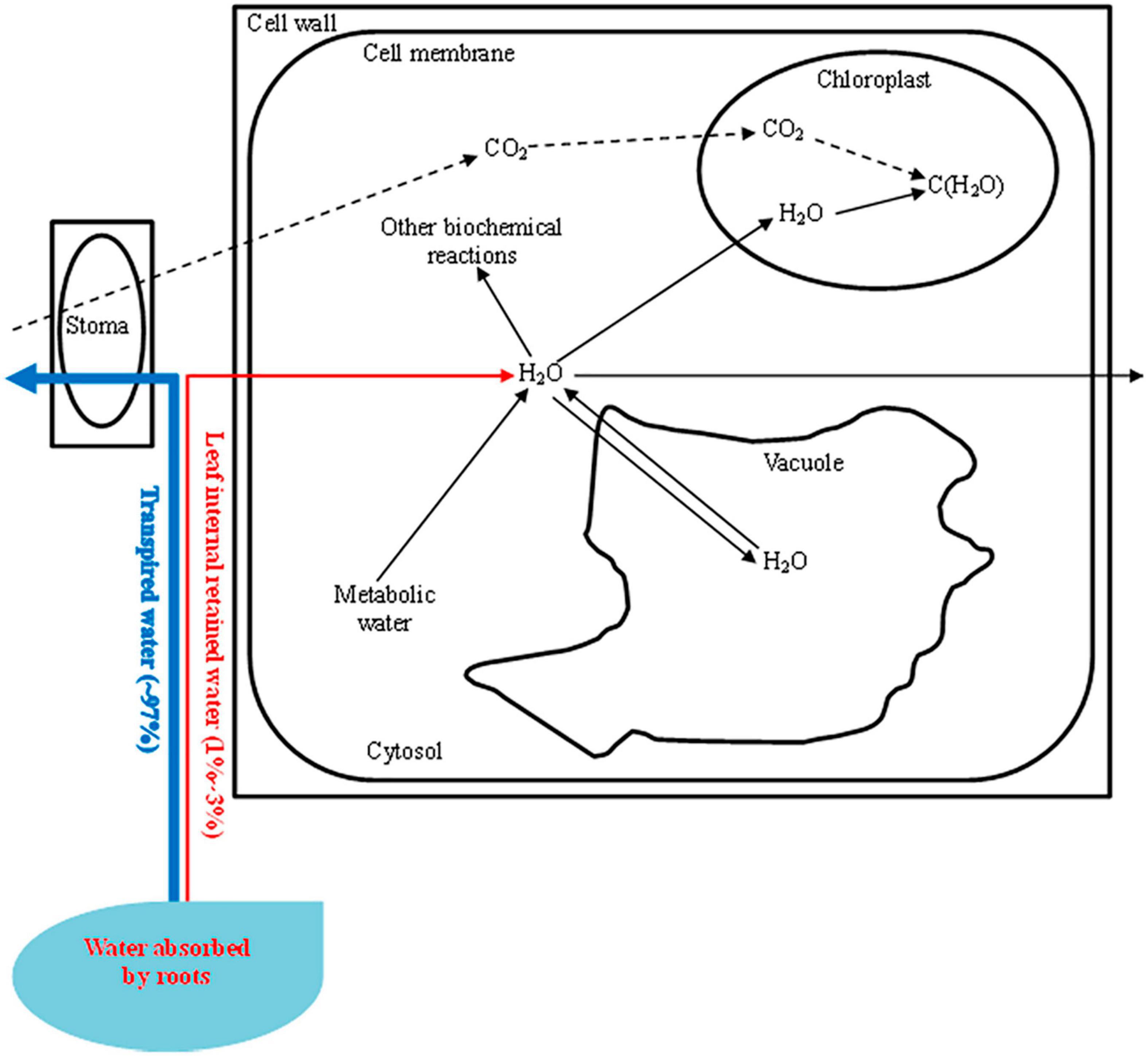About 97% of the water absorbed by the plant roots is dissipated by transpiration, while the rest is stored in plants.
Leaf intracellular water is the retained water when the absorbed water transported within leaves, and it is easy to be ignored because it accounts for a small proportion and is difficult to be directly detected.
Recently, a research group led by Prof. WU Yanyou from the Institute of Geochemistry of the Chinese Academy of Sciences (IGCAS), together with Dr. XING Deke from Jiangsu University, established a coupling model between gripping force and physiological impedance and calculated the leaf intracellular water transport rate.
The study was published in Frontiers in Plant Science.
Intracellular water plays a key role in plant photosynthesis, growth and other metabolisms. Therefore, the intracellular water status of leaves can more accurately represent the water demand information of plants.
Leaf intracellular water exhibits complex dynamic characteristics under the influences of surroundings and plant self-regulation, and it cannot be monitored in real-time by the existing technology.
In this study, the researchers derived the formula based on the relationship model between physiological impedance and imposed gripping force of the sensor according to the Nernst equation. Then, they calculated leaf intracellular water transport rate by rapidly determining the plant electrophysiological parameters (i.e., physiological impedance).
Under the mild water deficit condition, the stability of leaf intracellular water transport was conducive to the plant growth and dry matter accumulation. The increase in the transport rate of leaf intracellular water could enhance the intracellular water-use efficiency and maintain the photosynthesis when water deficit was aggravated.
The results demonstrated that the regulation of transport and utilization of leaf intracellular water played an important role in plant responses to water deficit.
In addition, by using electrophysiological parameters, the collaborative team has developed several methods for detecting plants' water-holding and transport capacity and salt tolerance, and screening stress-tolerant plant species.
This study was supported by the National Natural Science Foundation of China, the Project of the National Key Research and Development Program of China, and the Priority Academic Program Development (PAPD) of Jiangsu Higher Education Institutions.

Figure 1 Leaf intracellular water transport traits (Image by IGCAS)
Contact:
WU Yanyou
Institute of Geochemistry of the Chinese Academy of Sciences
(By Prof. WU Yanyou's group)